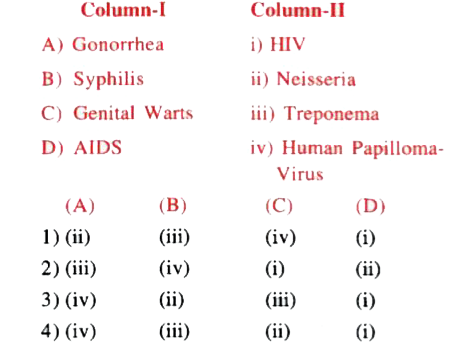Linear growth in the stem of grasses is caused by
Intercalary meristems
Apical meristems
Fascicular cambium
both 1 and 2
The correct Answer is:A
Step-by-Step Solution:
1. Understanding Linear Growth: Linear growth refers to the increase in length of the plant stem, which occurs due to the division and elongation of cells.
2. Role of Meristematic Tissue: The primary tissue responsible for growth in plants is meristematic tissue. This tissue consists of undifferentiated cells that can divide and contribute to growth.
3. Types of Meristematic Tissues: There are two main types of meristematic tissues relevant to stem growth:
- Apical Meristem: Located at the tips of roots and shoots, responsible for primary growth (increasing length).
- Intercalary Meristem: Found at the base of leaves and internodes, responsible for the elongation of stems.
4. Growth in Grasses: In grasses, the linear growth of the stem is primarily due to the activity of the intercalary meristem. This meristem allows for rapid elongation of the internodes, which contributes to the overall height of the grass.
5. Conclusion: Therefore, the linear growth in the stem of grasses is caused by the intercalary meristematic tissue.
Final Answer:
The linear growth in the stem of grasses is caused by intercalary meristematic tissue.
---
- Apical Meristem: Located at the tips of roots and shoots, responsible for primary growth (increasing length).
- Intercalary Meristem: Found at the base of leaves and internodes, responsible for the elongation of stems.
The linear growth in the stem of grasses is caused by intercalary meristematic tissue.
Topper's Solved these Questions
- HISTOLOGY AND ANATOMY OF FLOWERING PLANTSBOOK - AAKASH SERIESCHAPTER - HISTOLOGY AND ANATOMY OF FLOWERING PLANTSEXERCISE - EXERCISE - III (PREVIOUS AIPMT/NEET QUESTIONS)
24 Videos
- HISTOLOGY AND ANATOMY OF FLOWERING PLANTSBOOK - AAKASH SERIESCHAPTER - HISTOLOGY AND ANATOMY OF FLOWERING PLANTSEXERCISE - EXERCISE - I (SECONDARY GROWTH)
45 Videos
- ENVIRONMENTAL ISSUESBOOK - AAKASH SERIESCHAPTER - ENVIRONMENTAL ISSUESEXERCISE - Exercise-III (Previous AIPMT/NEET Questions)
41 Videos
- HUMAN HEALTH DISEASEBOOK - AAKASH SERIESCHAPTER - HUMAN HEALTH DISEASEEXERCISE - EXERCISE - III (PREVIOUS AIPMT/NEET QUESTIONS)
56 Videos
Similar Questions
Cortex is the region found between
View SolutionDedifferentiation occurs during the formation of
View SolutionWhich of the following in sewage treatment removes suspended solids?
View SolutionMatch the following sexually transmitted diseases (Colum-I) with their causative agent (Column -II) and select the correct option.

View SolutionGrass stem elongates by the activities of
View SolutionWheat and grass stems elongate by the activity of
View Solutionकोशिका-दीर्घन द्वारा तने की वृद्धि करते हैं
View SolutionStem of grasses and related plants elongate by the activity of
View SolutionAssertion (A) : Stem of the grass is soft and stem of the neem is hard. Reason (R ) : Grass is monocot, there is no secondary growth. So, its stem is soft whereas neem is dicot, and there is secondary growth so the stem is very hard and woody .
View Solutionசரியான கூற்று மற்றும் காரணம் – கண்டறி கூற்று - புல்லின் தண்டு மென்மையானது. ஆனால் வேப்பமரம் தண்டு கடினமானது. காரணம் : இருவிதையிலை தாவரத் தண்டுகளுக்கும், வேர்களுக்கும் இரண்டாம் நிலை வளர்ச்சி கட்டைக்கு கடினத்தன்மையை அளிக்கிறது. ஒருவிதையிலை தாவரங்களில் பொதுவாக இரண்டாம் நிலை வளர்ச்சி காணப்படுவதில்லை. ஆதலால் மென்மையாகக் காணப்படுகிறது.
View SolutionRejuvenation of growth of cut grass is accomplished by
View SolutionLinear growth in the stem of grasses is caused by
View SolutionDescribe various methods for measurement of linear growth of stem and radicle.
View Solutionघास के तने की लम्बाई में वृद्धि किसके कारण होती है ?
View Solutionघास के तने की लम्बाई ........ विभाज्योतक की क्रिया से बढ़ती है।
View SolutionBamboo or grass stem elongates by the activity of :
View Solution

